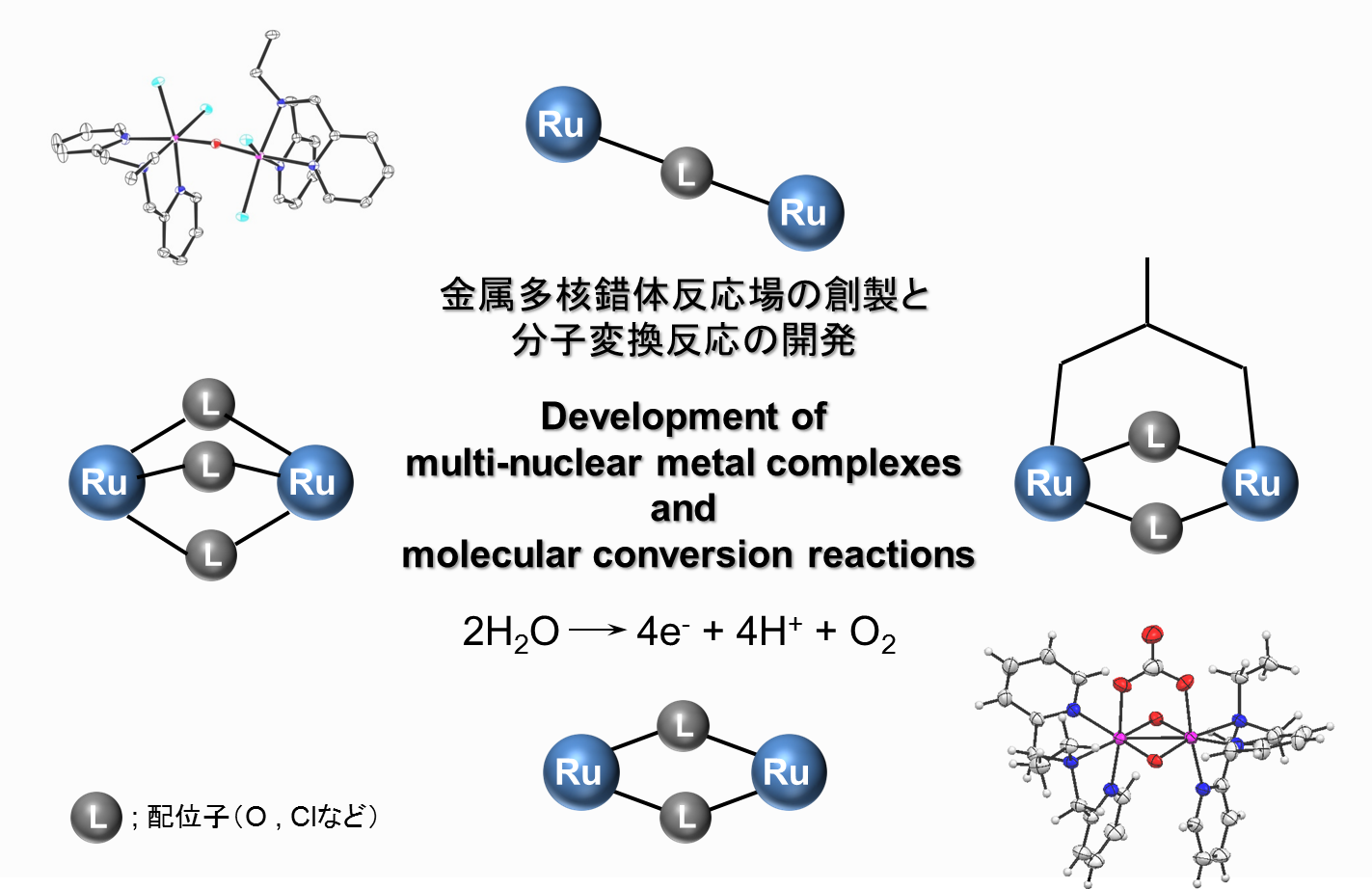2023.08.02

Faculty of Science and Technology / Department of Materials and Life Sciences
Misawa Tomoyo Assistant Professor
In nature and in biological systems, a number of transition metal complexes or the active sites of enzymes, which have multi-nuclear structure, function as molecular conversion reaction fields by changing its electronic structures and core strucres very well throughout the reactions. ‘Multi-nuclear’ means that one molecule has two or more metal centers. Syntheses of multi-nuclear metal complexes and molecular conversion reactions on these new complexes have been studied in order that we can understand the reaction mechanisms and develop new and efficient reaction on these complexes.

・Water oxidation catalysts in homogeneous systems
・Mediaters for conversion of carbon dioxide in homogeneous systems
Analyses of reaction processes of molecular conversion reactions by multi-nuclear ruthenium complexes lead to the understanding of various natural and biological reactions, in which transtion metal complexes (or active sites of enzymes)are involved. These studies would open up new molecular converion reaction systems learned from natural systems.
Single crystal X-ray structural analysis, Electrochemical measurements (e.g. Cyclic Voltammetry), Infrared (IR) spectrum, UV-vis-NIR spectrum, Gas chromatography (GC)
Proposal for building up homogeneous molecular conversion reaction ssystems; water oxidation and reduction of carbon dioxide
T. Suzuki, Y. Suzuki, R. Miyamoto, T. Kawamoto, S. Nanbu, H. Nagao, Inorg. Chem. 55, 2016, 6830.
T. Suzuki, K. Matsuya, T. Kawamoto, H. Nagao, Eur. J. Inorg. Chem., 2014, 722 – Cluster Issue: Water oxidation chemistry.